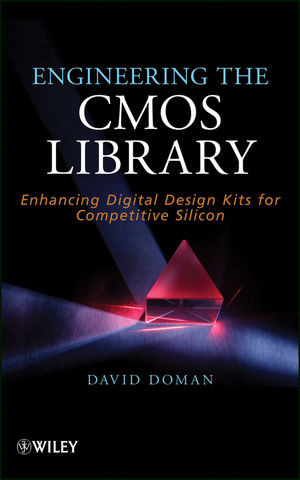

Most ebook files are in PDF format, so you can easily read them using various software such as Foxit Reader or directly on the Google Chrome browser.
Some ebook files are released by publishers in other formats such as .awz, .mobi, .epub, .fb2, etc. You may need to install specific software to read these formats on mobile/PC, such as Calibre.
Please read the tutorial at this link: https://ebookbell.com/faq
We offer FREE conversion to the popular formats you request; however, this may take some time. Therefore, right after payment, please email us, and we will try to provide the service as quickly as possible.
For some exceptional file formats or broken links (if any), please refrain from opening any disputes. Instead, email us first, and we will try to assist within a maximum of 6 hours.
EbookBell Team

4.7
96 reviewsShows readers how to gain the competitive edge in the integrated circuit marketplace
This book offers a wholly unique perspective on the digital design kit. It points to hidden value in the safety margins of standard-cell libraries and shows design engineers and managers how to use this knowledge to beat the competition.
Engineering the CMOS Library reveals step by step how the generic, foundry-provided standard-cell library is built, and how to extract value from existing std-cells and EDA tools in order to produce tighter-margined, smaller, faster, less power-hungry, and more yield-producing integrated circuits. It explores all aspects of the digital design kit, including the different views of CMOS std-cell libraries along with coverage of IO libraries, memory compilers, and small analog blocks. Readers will learn:
How to work with overdesigned std-cell libraries to improve profitability while maintaining safety
How functions usually found in std-cell libraries cover the design environment, and how to add any missing functions
How to harness the characterization technique used by vendors to add characterization without having to get it from the vendor
How to use verification and validation techniques to ensure proper descriptive views and even fix inconsistencies in vendor release views
How to correct for possible conflicts arising from multiple versions and different vendor sources in any given integrated circuit design
Complete with real-world case studies, examples, and suggestions for further research, Engineering the CMOS Library will help readers become more astute designers.Content:
Chapter 1 Introduction (pages 1–8):
Chapter 2 Stdcell Libraries (pages 9–38):
Chapter 3 IO Libraries (pages 39–51):
Chapter 4 Memory Compilers (pages 52–62):
Chapter 5 Other Functions (pages 63–79):
Chapter 6 Physical Views (pages 80–94):
Chapter 7 Spice (pages 95–108):
Chapter 8 Timing Views (pages 109–144):
Chapter 9 Power Views (pages 145–159):
Chapter 10 Noise Views (pages 160–169):
Chapter 11 Logical Views (pages 170–180):
Chapter 12 Test Views (pages 181–192):
Chapter 13 Consistency (pages 193–208):
Chapter 14 Design for Manufacturability (pages 209–225):
Chapter 15 Validation (pages 226–236):
Chapter 16 Playing with the Physical Design Kit: Usually “At Your Own Risk” (pages 237–246):
Chapter 17 Tagging and Revisioning (pages 247–259):
Chapter 18 Releasing and Supporting (pages 260–275):
Chapter 19 Other Topics (pages 276–294):
Chapter 20 Communications (pages 295–304):